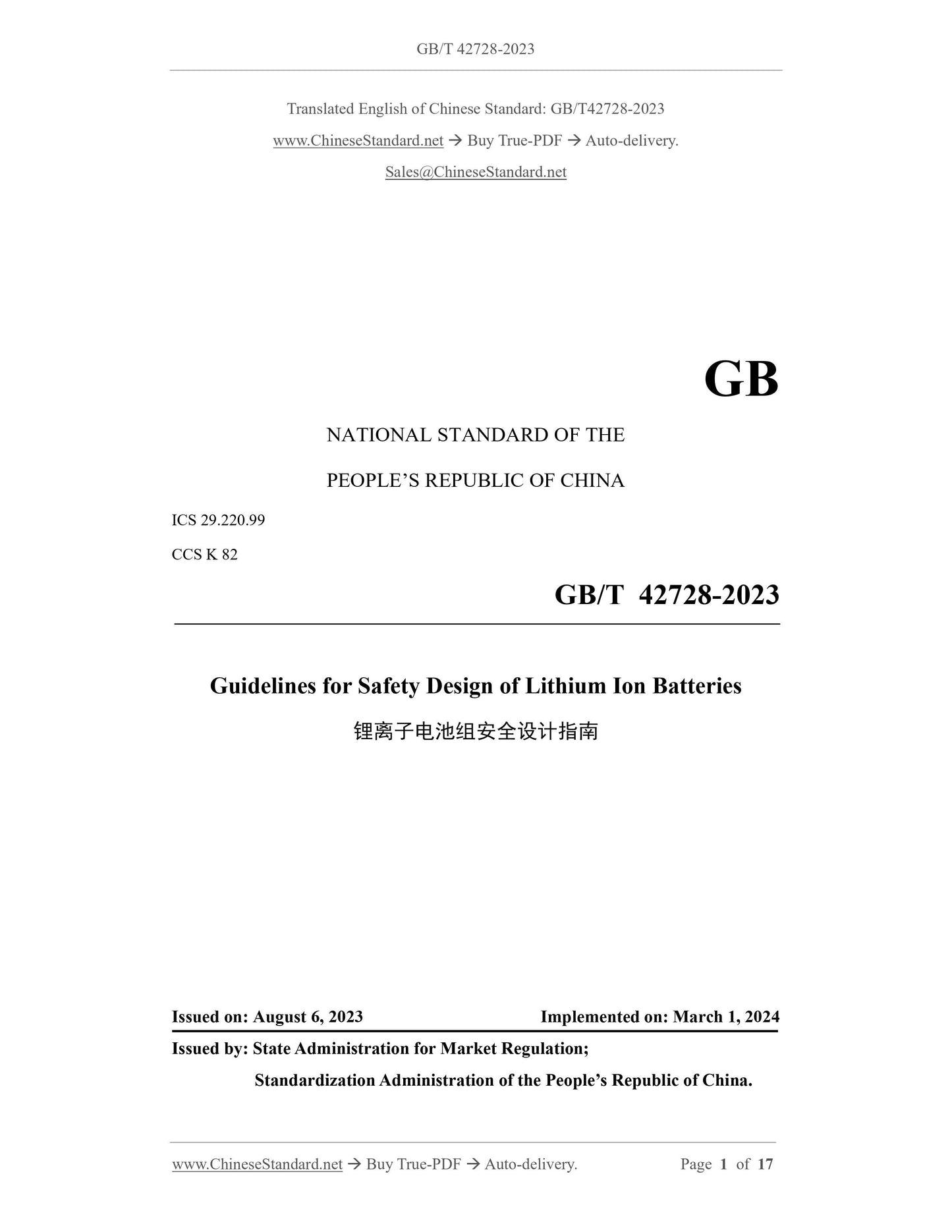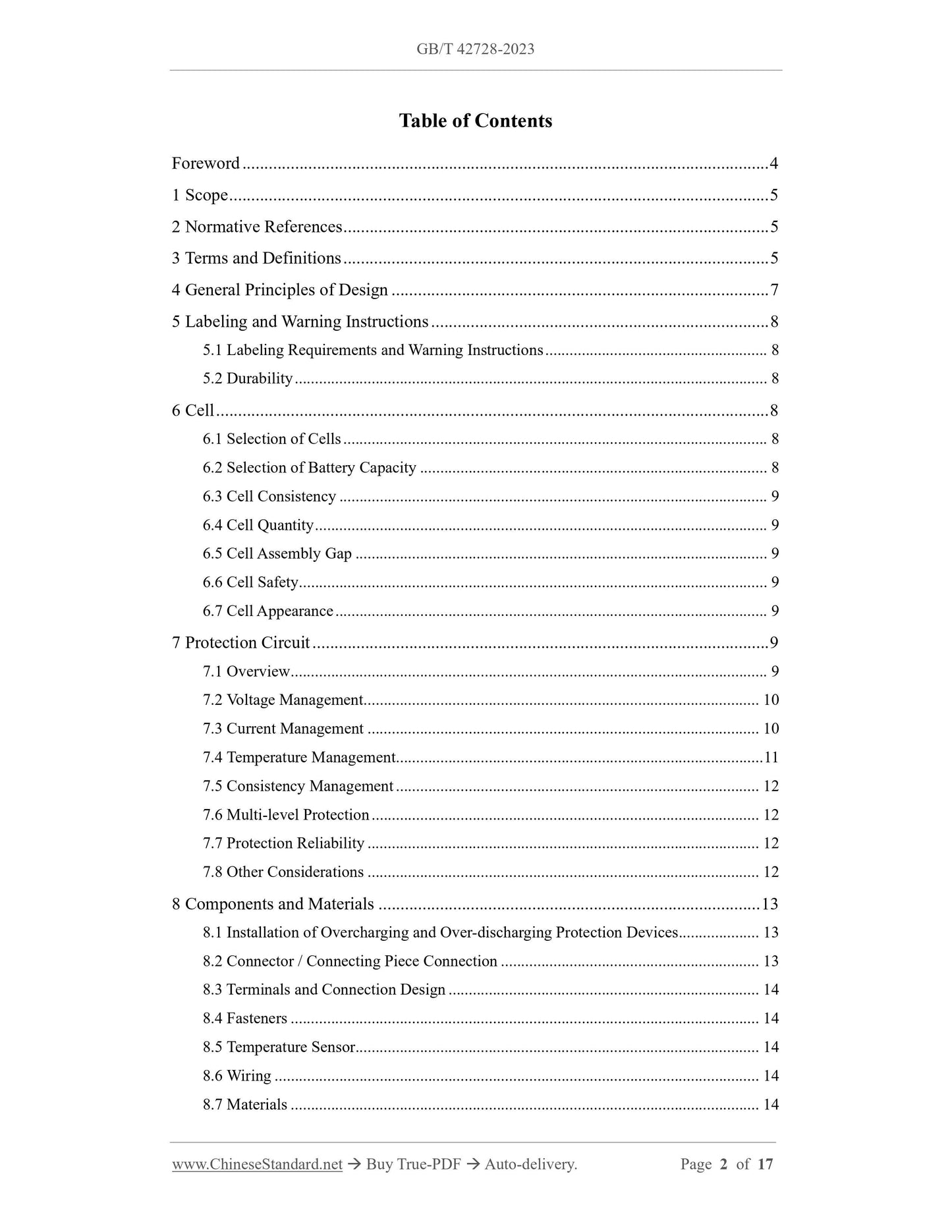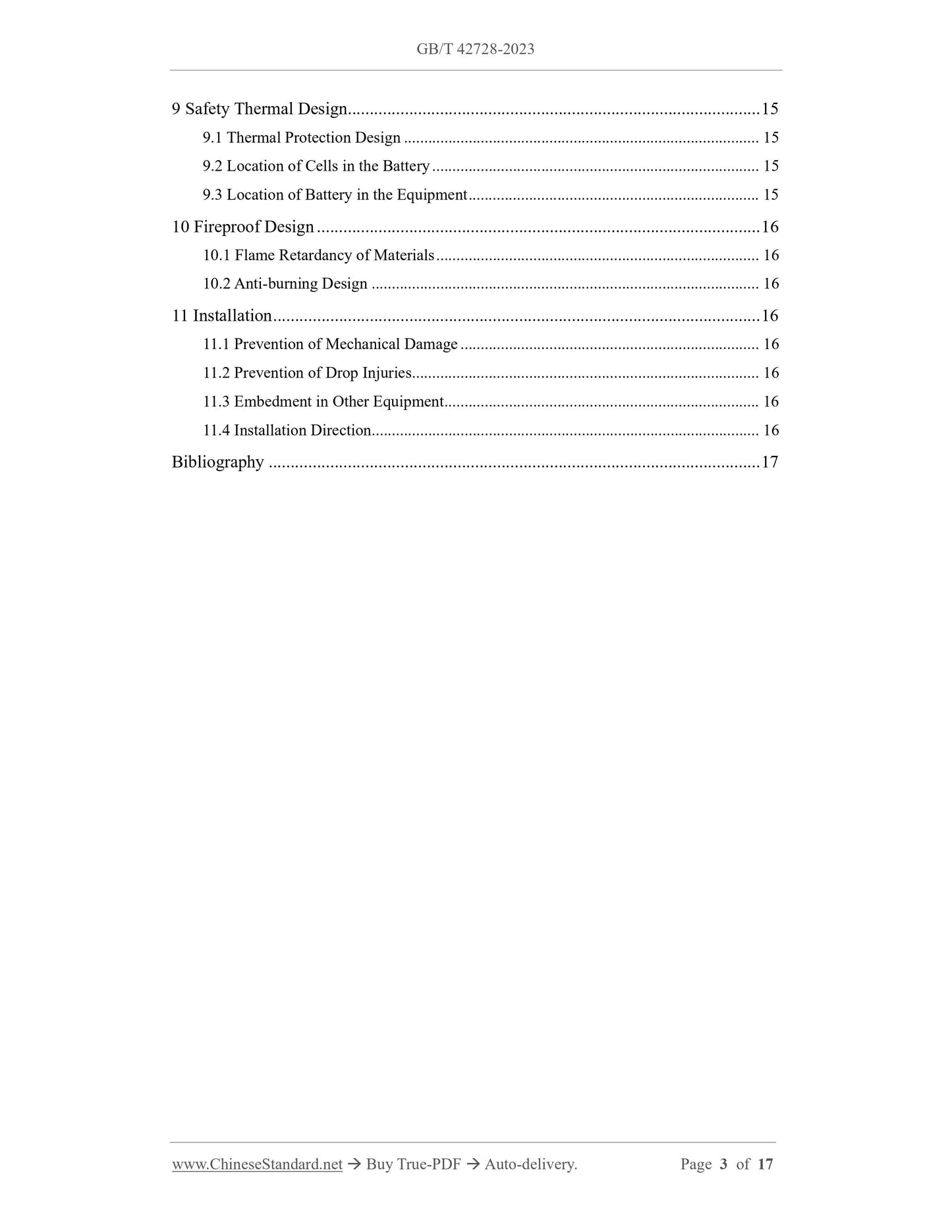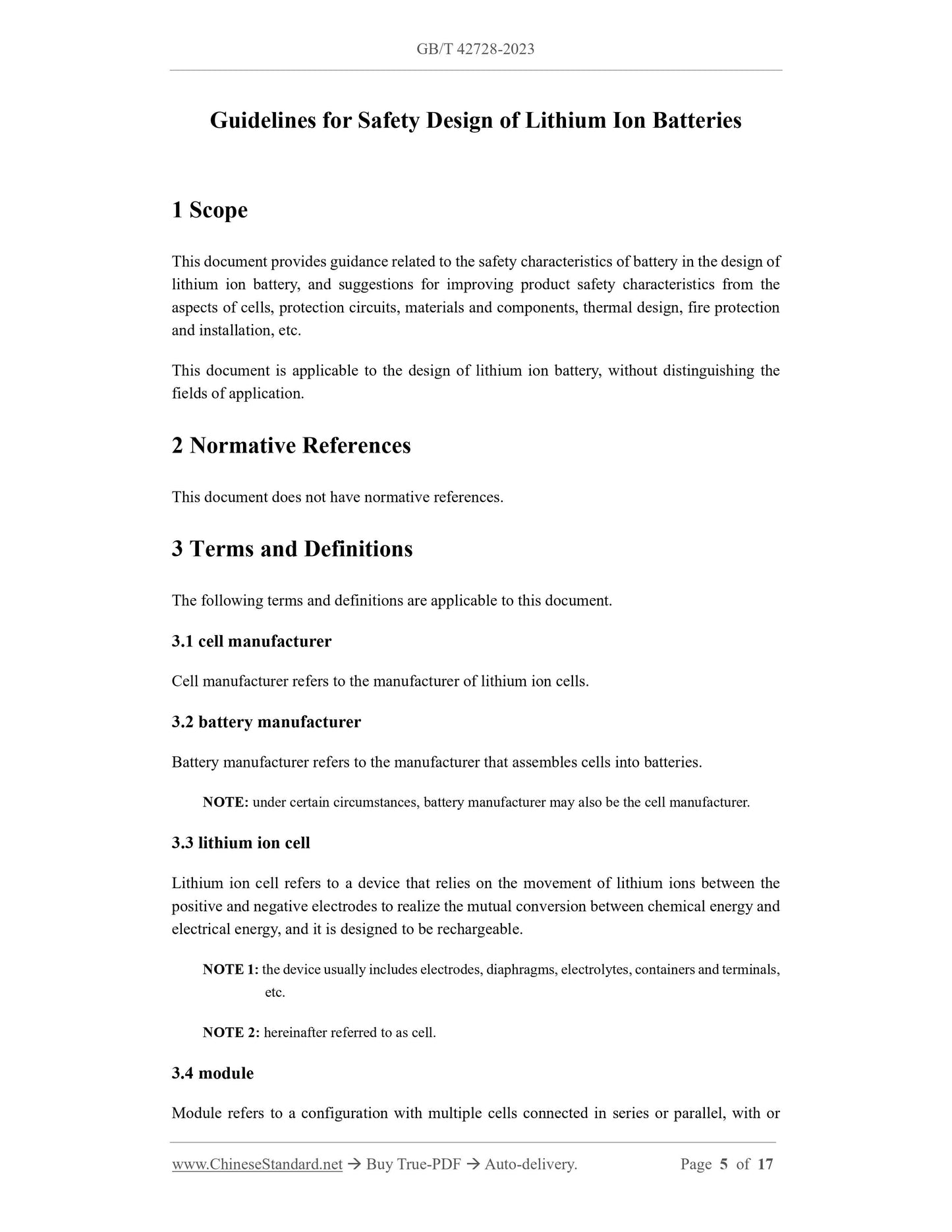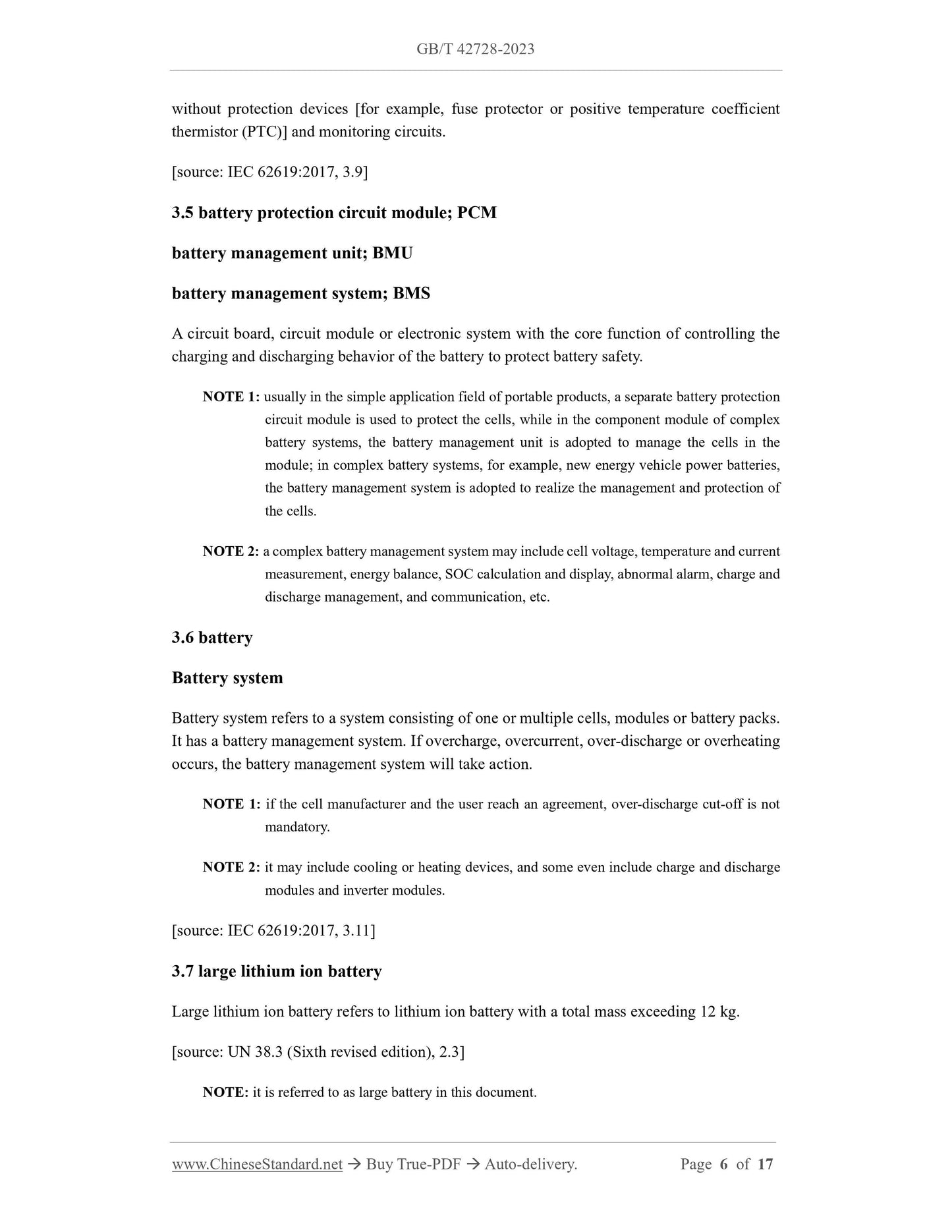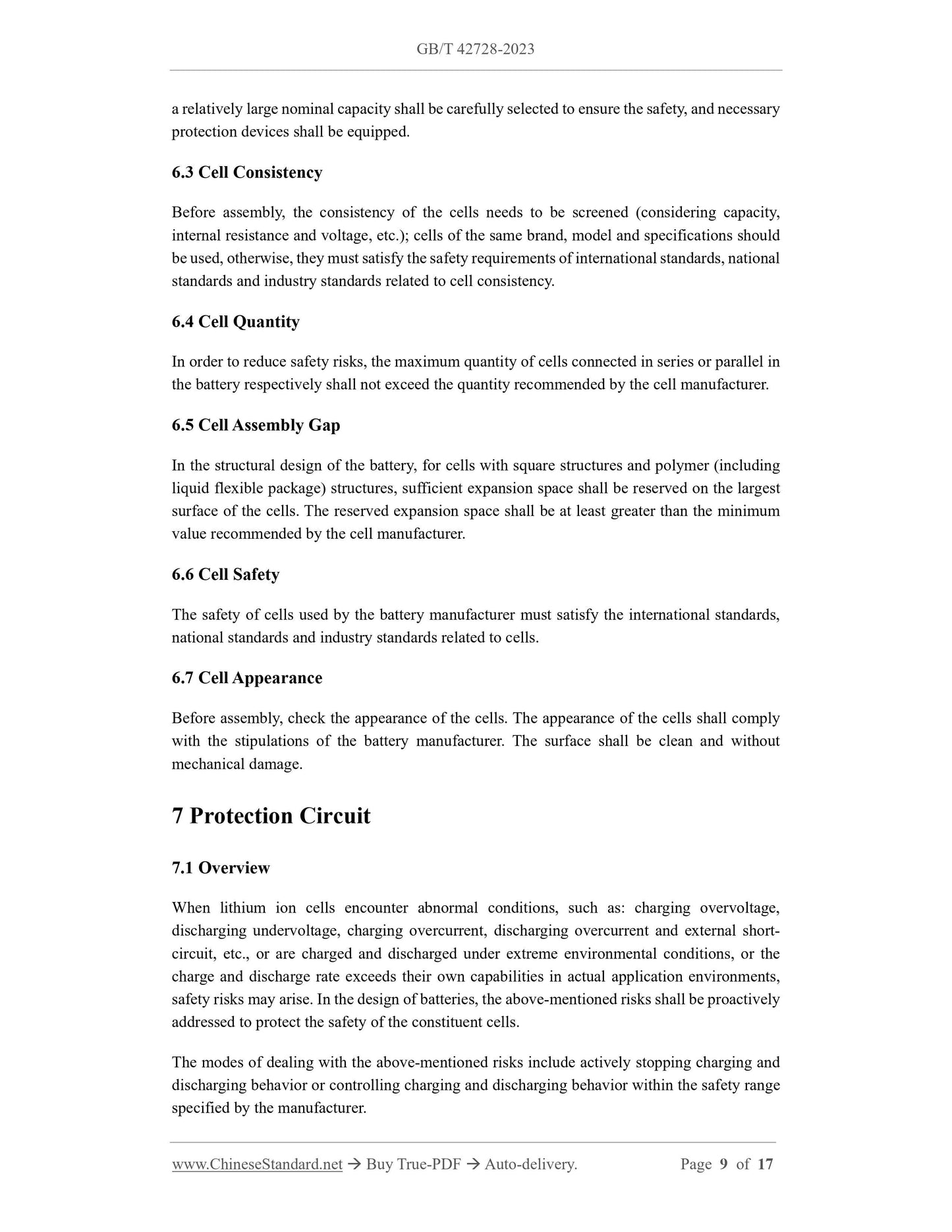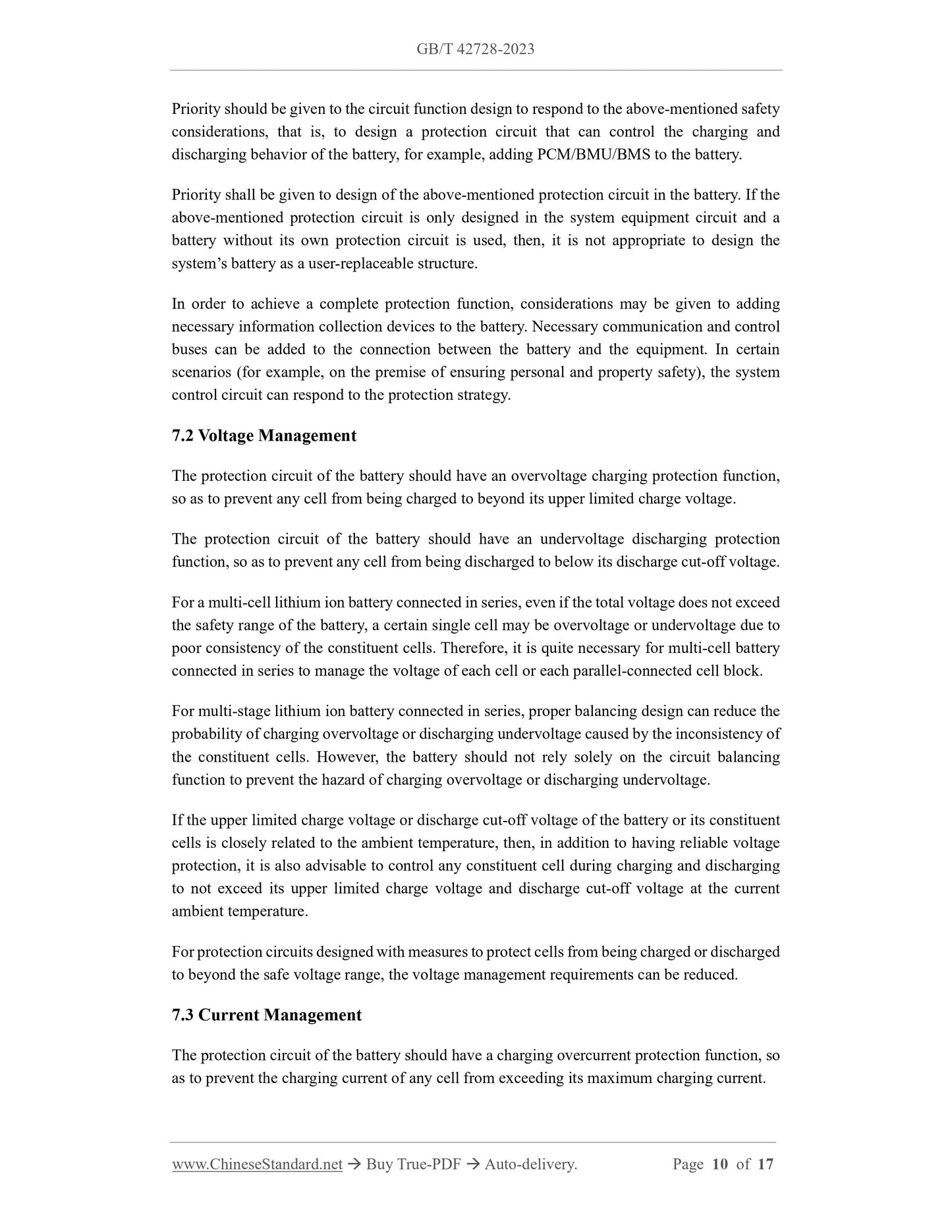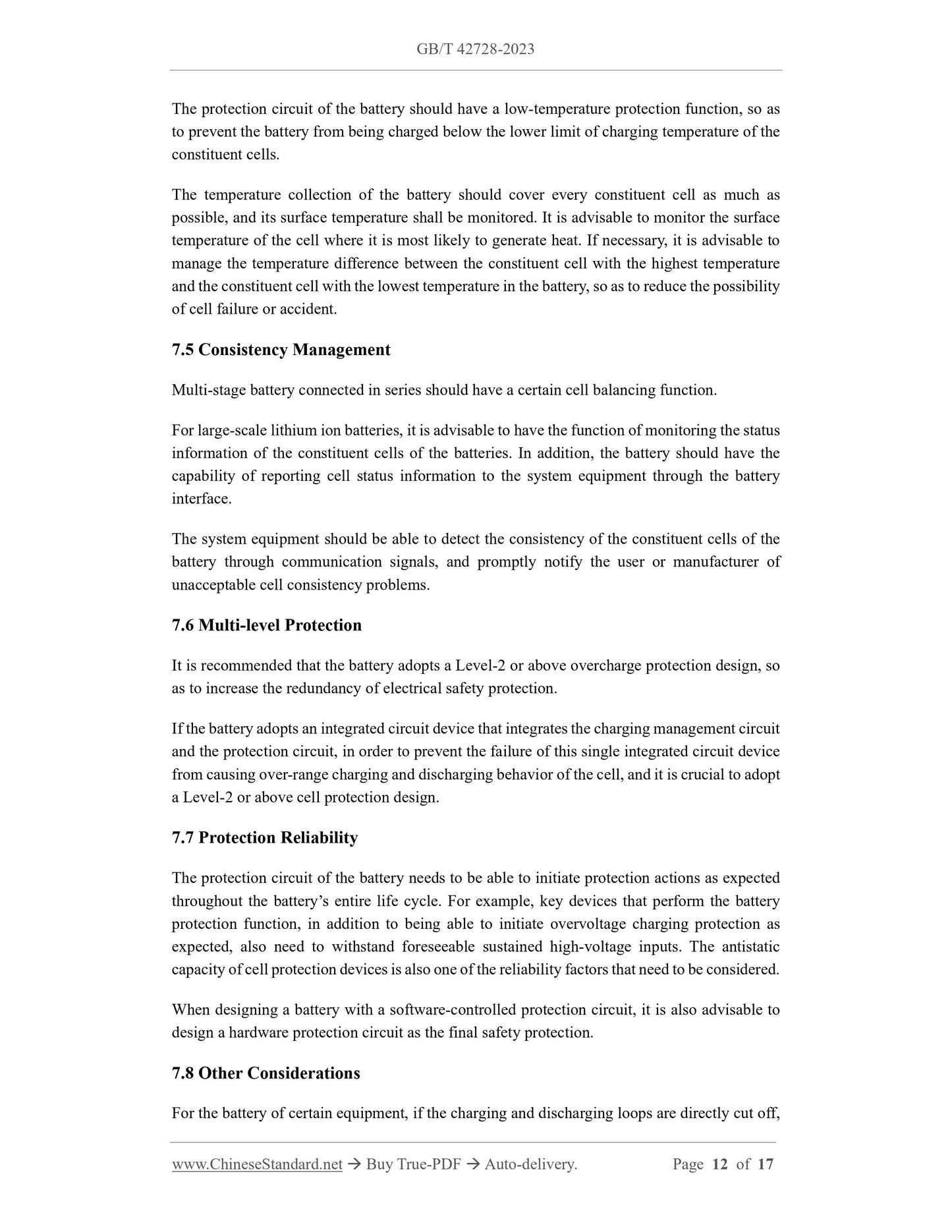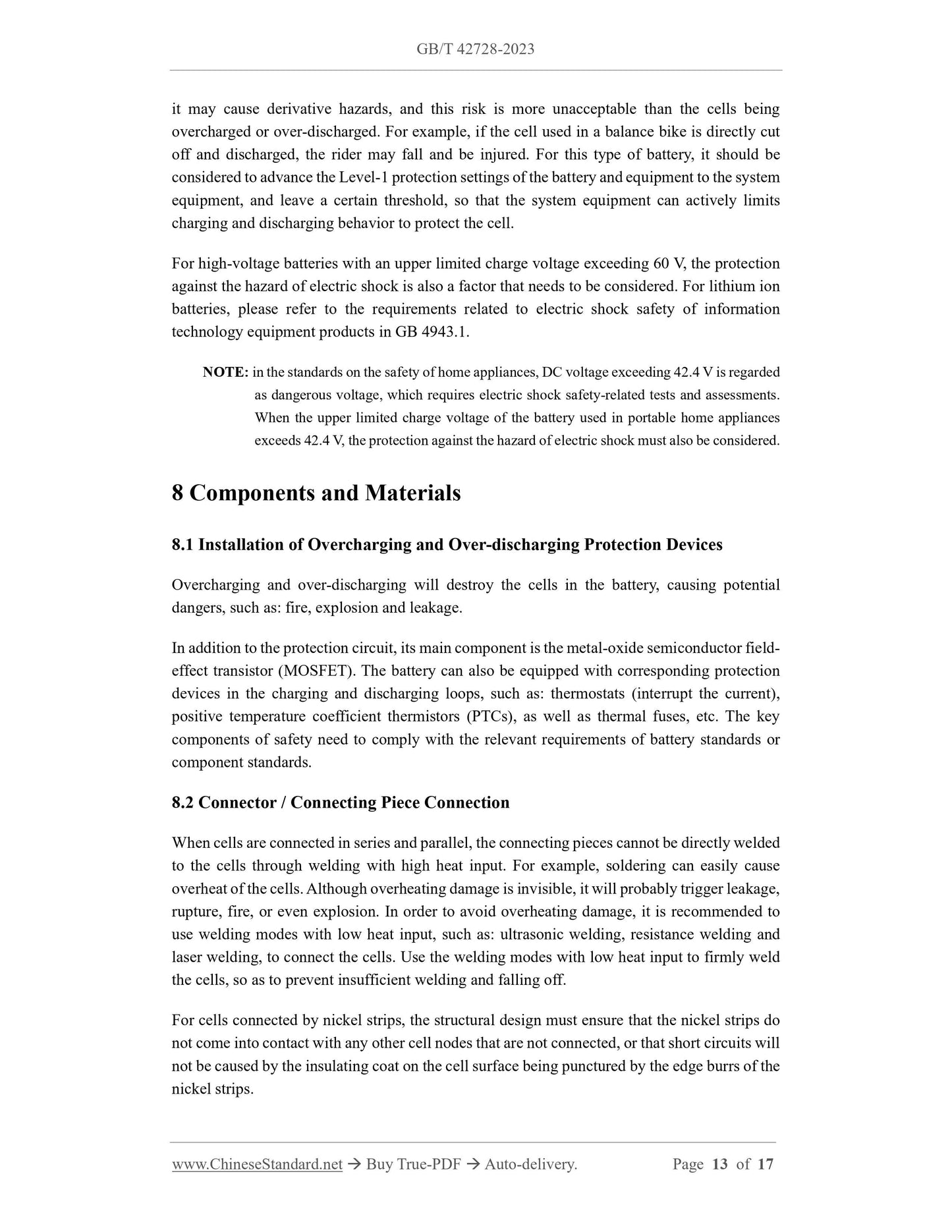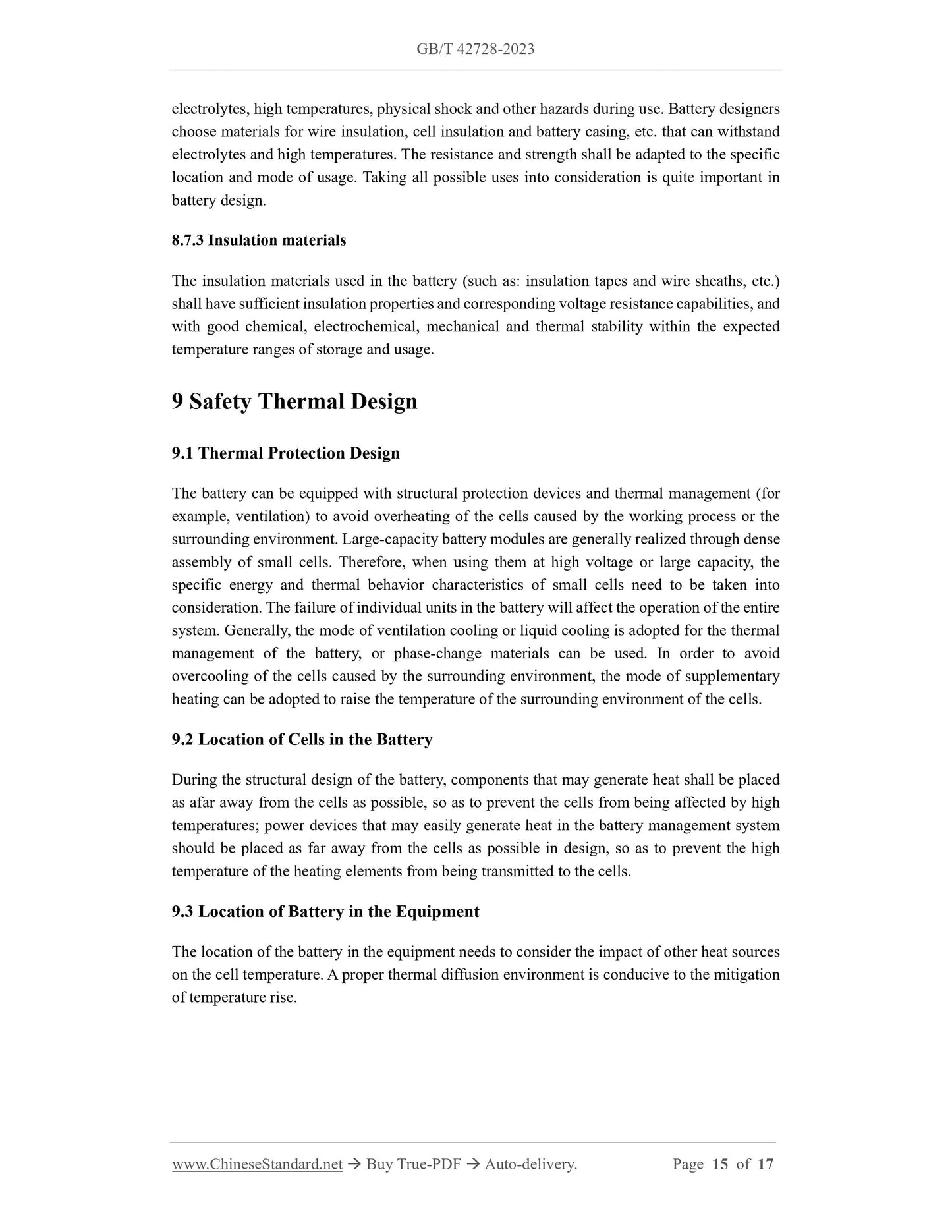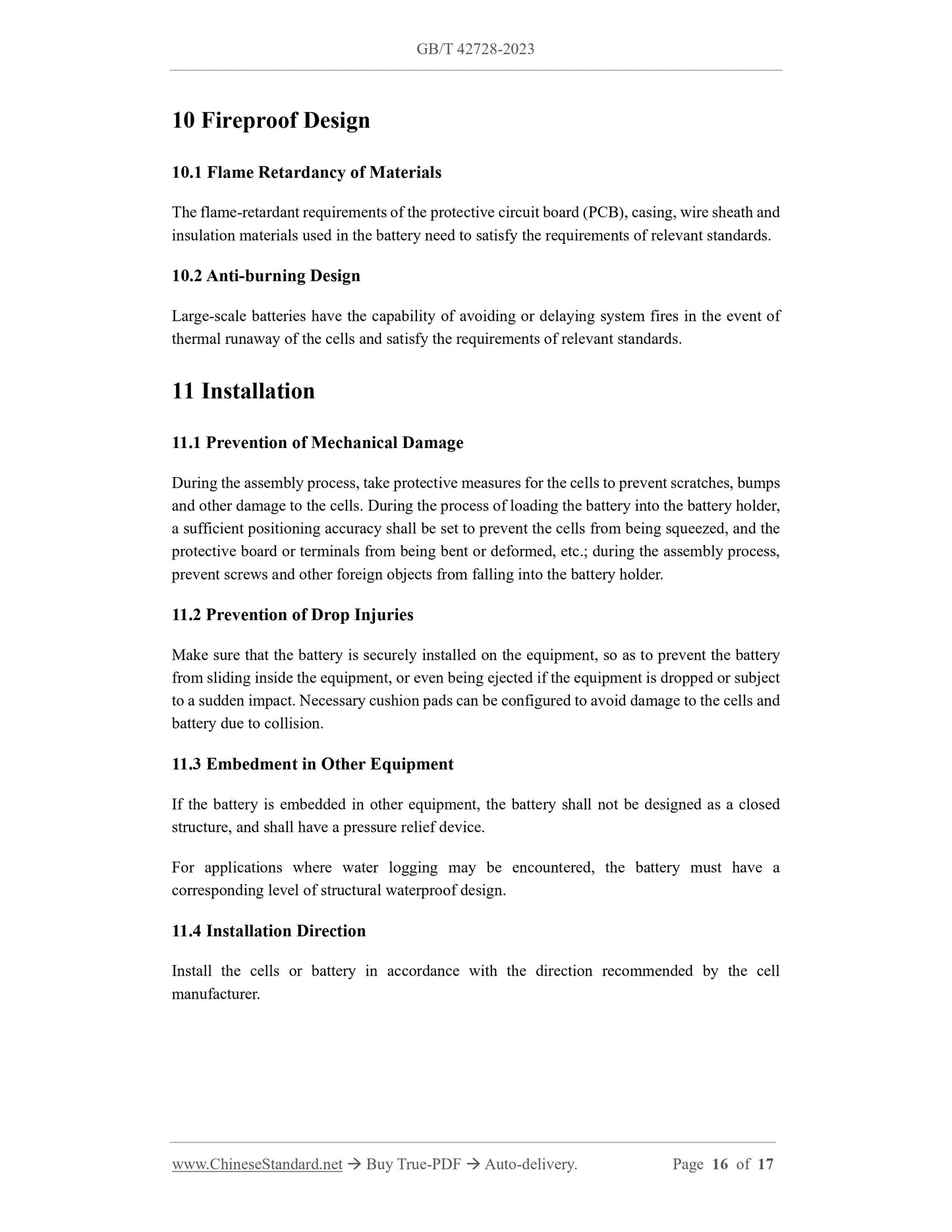1
/
of
11
www.ChineseStandard.us -- Field Test Asia Pte. Ltd.
GB/T 42728-2023 English PDF (GB/T42728-2023)
GB/T 42728-2023 English PDF (GB/T42728-2023)
Regular price
$190.00
Regular price
Sale price
$190.00
Unit price
/
per
Shipping calculated at checkout.
Couldn't load pickup availability
GB/T 42728-2023: Guidelines for safety design of lithium ion batteries
Delivery: 9 seconds. Download (and Email) true-PDF + Invoice.Get Quotation: Click GB/T 42728-2023 (Self-service in 1-minute)
Newer / historical versions: GB/T 42728-2023
Preview True-PDF
Scope
This document provides guidance related to the safety characteristics of battery in the design oflithium ion battery, and suggestions for improving product safety characteristics from the
aspects of cells, protection circuits, materials and components, thermal design, fire protection
and installation, etc.
This document is applicable to the design of lithium ion battery, without distinguishing the
fields of application.
Basic Data
| Standard ID | GB/T 42728-2023 (GB/T42728-2023) |
| Description (Translated English) | Guidelines for safety design of lithium ion batteries |
| Sector / Industry | National Standard (Recommended) |
| Classification of Chinese Standard | K82 |
| Classification of International Standard | 29.220.99 |
| Word Count Estimation | 14,175 |
| Date of Issue | 2023-08-06 |
| Date of Implementation | 2024-03-01 |
| Issuing agency(ies) | State Administration for Market Regulation, China National Standardization Administration |
Share
